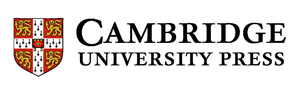|
Symposium S7
29 – 30 June 2017

Aims and scope
As a prototypical disk galaxy that can be studied in the highest detail, the Milky Way is a unique observational laboratory to test models of galaxy formation.
Outstanding recent progress in our understanding of the Milky Way and its components has been achieved by massive past (e.g., SEGUE, RAVE), ongoing (e.g., APOGEE, Gaia, Gaia-ESO, GALAH) and upcoming (e.g., MOONS, 4MOST, LSST, WEAVE) dedicated surveys. They provide photometric, spectroscopic, and astrometric data with unprecedented sky coverage, depth, resolution, sensitivity and wavelength coverage. The result is a huge database of chemical composition, age, and phase-space information for stellar populations in all Galactic structures, including the disk, bulge, and halo, with their clusters and streams, as well as satellite dwarf and irregular galaxies.
Therefore, we are now in the ideal position to place the Milky Way and its components in a broad context. On one side, confrontation of this detailed observational picture with state-of-the-art simulations of galaxy formation will shed new light on of the formation of the Milky Way. On the other, comparing the Milky Way's properties with those of nearby galaxies will greatly improve our understanding of galaxy formation in general, and how typical a galaxy the Milky Way is.
In light of these exciting prospects, we wish to bring together theoreticians and observers in the field of galactic and extra-galactic stellar population studies to review the current state of the field and provide the basis to move a step forward in our understanding of how galaxies form and evolve.
Programme
The session will have review (25+5) and contributed (12+3) talks. We plan to accept posters in order to encourage young scientists to present their works and share their results.
Main topics
- The Milky Way bulge/bar morphology, kinematics, and stellar populations
- The Milky Way disk morphology, kinematics, and stellar populations
- The Milky Way halo morphology, kinematics, and stellar populations
- Satellites, substructures and streams
- State of the art hydrodynamical and cosmological simulations of resolved stellar systems
- The Milky Way in an extragalactic context: Linking main results of ongoing surveys of the MW and nearby galaxies
Invited speakers
Invited reviews (25+5 mins):
- Jo Bovy (University of Toronto, Toronto - Canada)
- Rob Crain (Astrophysics Research Institute, LJMU - UK)
- Vanessa Hill (Observatoire de la Côte d'Azur, Nice - France)
- Livia Origlia (INAF-OABo, Bologna - Italy)
- Patricia Sanchez-Blazquez (Universidad Autonoma de Madrid, Madrid - Spain)
- Eline Tolstoy (Kapteyn Astronomical Institute, Groningen - The Netherlands)
Invited talks (12+3 mins):
- Giuseppina Battaglia (Instituto de Astrofisica de Canarias, La Laguna - Spain)
- Chris Evans (UK Astronomy Technology Centre, Edinburgh - UK)
- Paola Di Matteo (Observatoire de Paris, Paris - France)
- Sofia Feltzing (Lund Observatory, Lund - Sweden)
Scientific organisers
- Frederic Bournaud (Laboratoire AIM Paris-Saclay, Universite' Paris Diderot - France)
- Emanuele Dalessandro (co-Chair; National Institute for Astrophysics, OABo - Italy)
- Victor P. Debattista (University of Central Lancashire - UK)
- Andreea Font (Astrophysics Research Institute, LJMU - UK)
- Oscar A. Gonzalez (co-Chair; Astronomy Technology Centre - UK)
- Carmela Lardo (Astrophysics Research Institute, LJMU - UK)
- Sarah Martell (School of Physics, University of New South Wales - Australia)
- Alessio Mucciarelli (Department of Physics and Astronomy,UniBo - Italy)
- Melissa Ness (Max Planck Institute for Astronomy, Heidelberg - Germany)
- Ricardo Schiavon (Astrophysics Research Institute, LJMU- UK)
- Martin C. Smith (Shangai Astronomical Observatory, Shangai - China)
Contact
Emanuele Dalessandro & Oscar A. Gonzalez (ewass.s7.mw @ gmail.com)
Updated on Tue Jan 31 12:20:21 CET 2017
|

 A power cut will shut down all EAS services on Tuesday, 10 January 2017 starting at 7:30 CET.
A power cut will shut down all EAS services on Tuesday, 10 January 2017 starting at 7:30 CET.




















